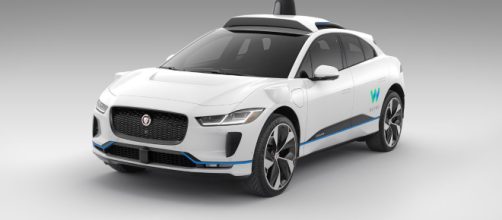Jaguar announced last week at the New York International Auto Show its partnership with Waymo, Google's autonomous automotive subsidiary. As reported by dezeen.com, the new joint initiative aims to roll-out a fleet of Jaguar's electric I-Pace SUV cars equipped with Waymo's autonomous technologies. With deliveries slated for July, the I-Pace will become the first electric vehicle available from a premium European car brand. The full-scale production is scheduled to start already in 2020, aiming for up to 20,000 units delivered to Google's driverless ride-hailing service by 2022.
The statement by the two companies envisages the new electric fleet to be capable of delivering as many as one million trips per day. According to the luxury British motor company, the new long-term strategic collaboration will further goals shared by Waymo and Jaguar Land Rover, such as making cars safer, freeing up people's time and improving mobility. Conceived four years ago, the I-Pace concept was first unveiled at the Los Angeles Auto Show back in November 2016. The fully-Electric Suv vehicle is now available to order after its production model was shown in a live broadcast on 1 March 2018 in a run-up to of the Geneva Motor Show. According to Jaguar, the first year of scheduled production volume is already pre-ordered by customers.
Beating Tesla Model X 75D and epitomising innovation, luxury and performance
The new sports utility car takes full advantage of unrivalled torque and acceleration offered by electric engines, as it can accelerate from zero to 100 km/h in approximately four seconds, while still being able to travel 500 kilometres on a single charge. This is considered standard for the upcoming generation of premium electric cars like Audi E-tron and Mercedes EQ C. Following its announcement at the Los Angeles Auto Show in 2016, Jaguar pitted the I-Pace against the Tesla Model X 75D in a zero-to-60 mph race, where I-Pace beat Model X by 0.4 seconds. It must be noted that Tesla has quicker 100D and P100D models, but when it comes to pricing, the 75D is closest to I-Pace even though the former costs about $10,000 more than the $69,500 petrol-less Jaguar.
The venerable Coventry-based brand is not new to being at the forefront of technology and innovation, as back in 1999 it was one of the first automakers to equip its cars with radar-powered adaptive cruise control. It also was the first to make disc brakes a viable option for cars after its C-Type C outfitted with the then new tech won the 1953 Le Mans race.
Further models with specs in line with EV competitors
According to engadget.com who were given a chance to have a test ride, the upcoming electric SUV feels like a classical Jag in terms of luxury and performance. The 395bhp I-Pace is the first pure-electric model from the British carmaker and will be followed by a range of forthcoming electrified Jaguars.
The first of them will be a new-generation XJ luxury saloon, due to be released next year. Hybrid versions of other models will become available by 2020. With the impending enactment of new CO2 targets in 2021, the I-Pace family will become crucial for Jaguar’s low-emission strategy. According to the new WLTP cycle, the I-Pace’s 90kWh lithium-ion battery delivers a range of up to 480 km. This equates to 540 km on the old NEDC test and 390 km on the American EPA cycle. The Tesla's latest Model 3 achieves 500 km on the EPA cycle, while Renault Zoe, the last year Europe’s best selling electric car offers a maximum range of 400 km on the NEDC cycle.


